Year 5
The English curriculum is built around the three interrelated strands of language, literature and literacy. Teaching and learning programs should balance and integrate all three strands. Together, the strands focus on developing students' knowledge, understanding and skills in listening, reading, viewing, speaking, writing and creating. Learning in English builds on concepts, skills and processes developed in earlier years, and teachers will revisit and strengthen these as needed.
In Years 5 and 6, students communicate with peers and teachers from other classes and schools, community members, and individuals and groups, in a range of face-to-face and online/virtual environments.
Students engage with a variety of texts for enjoyment. They listen to, read, view, interpret and evaluate spoken, written and multimodal texts in which the primary purpose is aesthetic, as well as texts designed to inform and persuade. These include various types of media texts including newspapers, film and digital texts, junior and early adolescent novels, poetry, non-fiction and dramatic performances.
The range of literary texts for Foundation to Year 10 comprises Australian literature, including the oral narrative traditions of Aboriginal and Torres Strait Islander Peoples, as well as the contemporary literature of these two cultural groups, and classic and contemporary world literature, including texts from and about Asia.
Literary texts that support and extend students in Years 5 and 6 as independent readers describe complex sequences, a range of non-stereotypical characters and elaborated events including flashbacks and shifts in time. These texts explore themes of interpersonal relationships and ethical dilemmas within real-world and fantasy settings. Informative texts supply technical and content information about a wide range of topics of interest as well as topics being studied in other areas of the curriculum. Text structures include chapters, headings and subheadings, tables of contents, indexes and glossaries. Language features include complex sentences, unfamiliar technical vocabulary, figurative language, and information presented in various types of graphics.
Students create a range of imaginative, informative and persuasive types of texts including narratives, procedures, performances, reports, reviews, explanations and discussions.
(source: www.australiancurriculum.edu.au)
Achievement Standard
Receptive modes (listening, reading and viewing)
By the end of Year 5, students explain how text structures assist in understanding the text. They understand how language features, images and vocabulary influence interpretations of characters, settings and events.
When reading, they encounter and decode unfamiliar words using phonic, grammatical, semantic and contextual knowledge. They analyse and explain literal and implied information from a variety of texts. They describe how events, characters and settings in texts are depicted and explain their own responses to them. They listen and ask questions to clarify content.
Productive modes (speaking, writing and creating)
Students use language features to show how ideas can be extended. They develop and explain a point of view about a text, selecting information, ideas and images from a range of resources.
Students create imaginative, informative and persuasive texts for different purposes and audiences. They make presentations which include multimodal elements for defined purposes. They contribute actively to class and group discussions, taking into account other perspectives. When writing, they demonstrate understanding of grammar using a variety of sentence types. They select specific vocabulary and use accurate spelling and punctuation. They edit their work for cohesive structure and meaning.
(source: www.australiancurriculum.edu.au)
- Plus Plan
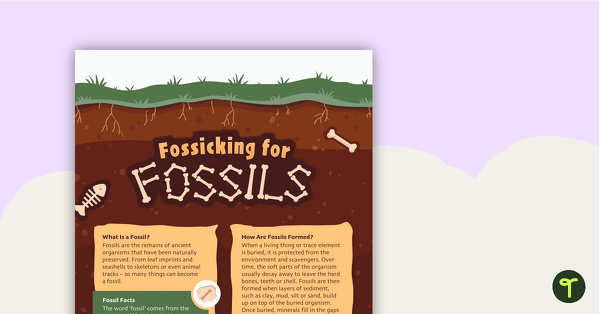
Fossicking for Fossils – Worksheet
A comprehension worksheet for an information report from the Year 5 magazine (Issue 2).
- Plus Plan
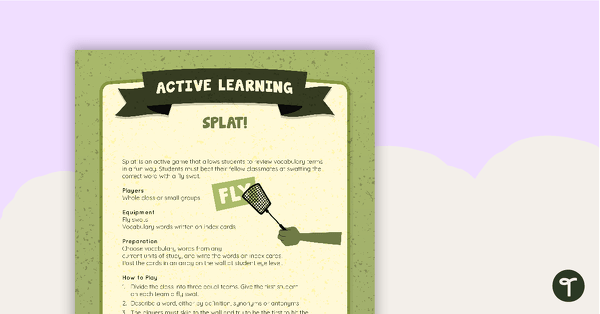
Splat! Active Game
An active game that allows students to test and build their vocabulary knowledge.
- Plus Plan
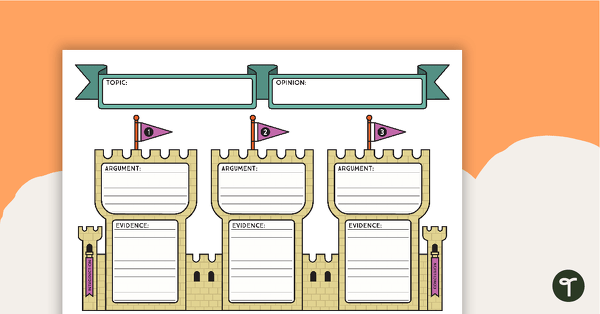
Argument Planning Template (Castle)
A castle-themed persuasive argument planning template.
- Plus Plan
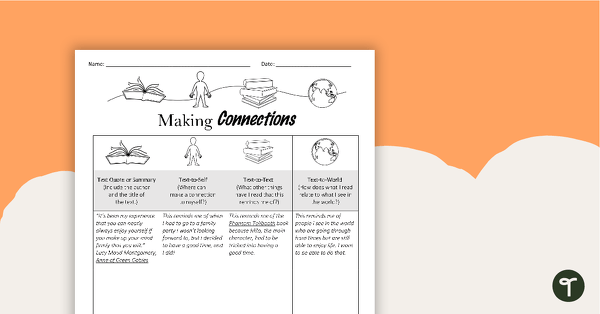
Making Connections Grid
A worksheet for students to practise making connections with a piece of text.
- Plus Plan
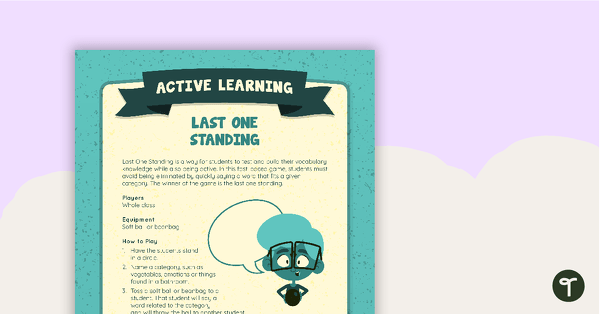
Last One Standing Active Game
An active game that allows students to build their vocabulary knowledge.
- Plus Plan
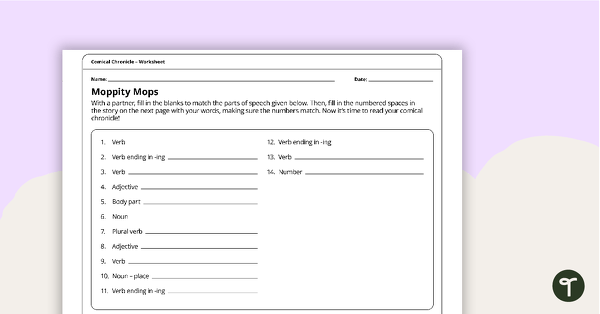
Comical Chronicle Worksheets - Year 4
A set of 10 ad-lib style stories for students to complete.
- Plus Plan
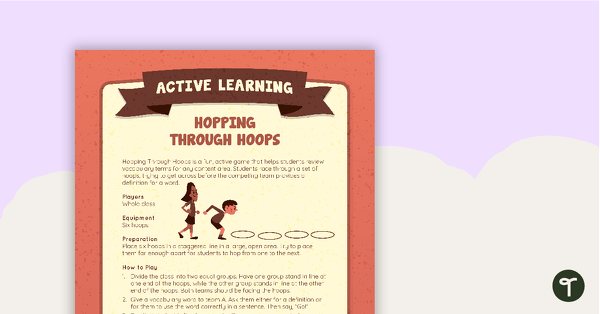
Hopping Through Hoops Active Game
An active game that allows students to review vocabulary words for any content area.
- Plus Plan

Around in Circles Active Game
An active game to use when reviewing any type of content with your students.
- Plus Plan
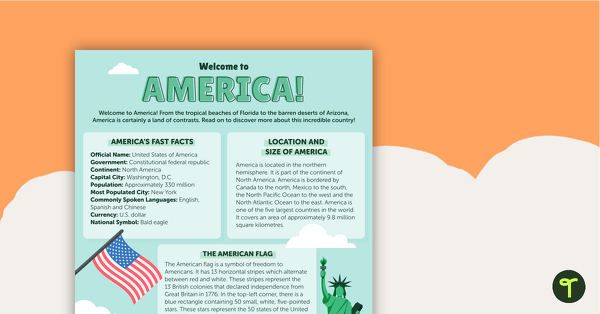
Welcome to America! – Worksheet
A comprehension worksheet for a country profile from the Year 5 magazine (Issue 2).
- Free Plan

The Secret Society of Vegetable Venerators – Worksheet
A comprehension worksheet for a narrative from the Year 5 magazine (Issue 2).
- Plus Plan
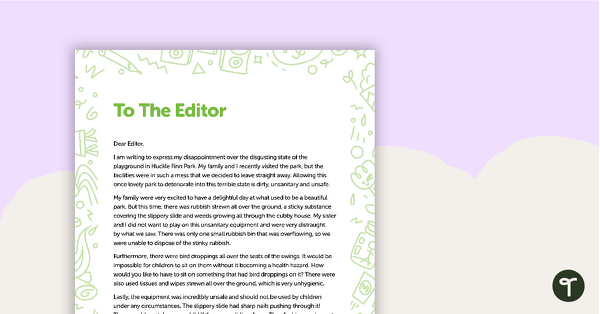
Letter to the Editor (Huckle Finn Park Disgrace) – Worksheet
A comprehension worksheet for a letter to the editor from the Year 6 magazine (Issue 2).
- Plus Plan
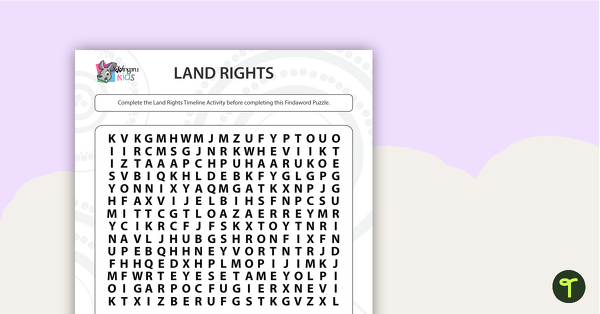
Land Rights Word Search - Upper Primary
A printable Land Rights Word Search worksheet for your upper primary school students to complete.
- Plus Plan

Land Rights Timeline Worksheet
A printable Land Rights Timeline worksheet for your students to complete in your classroom.
- Plus Plan
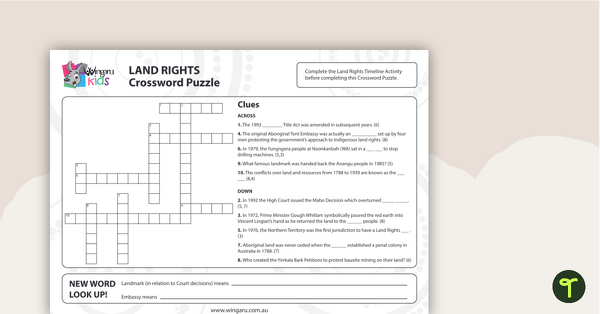
Land Rights Crossword
A printable Land Rights Crossword worksheet for your students to complete in your classroom.
- Plus Plan

Land Rights Jumbled Words
A Land Rights jumbled words printable worksheet for your students to complete in your classroom.
- Plus Plan
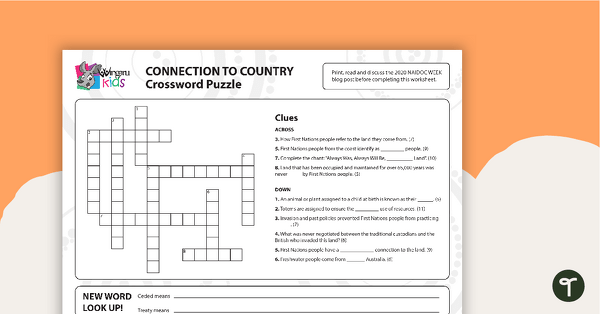
NAIDOC Week Connection to Country Crossword Puzzle Worksheet
A NAIDOC Week Connection to Country crossword puzzle worksheet to use with your students.
- Plus Plan
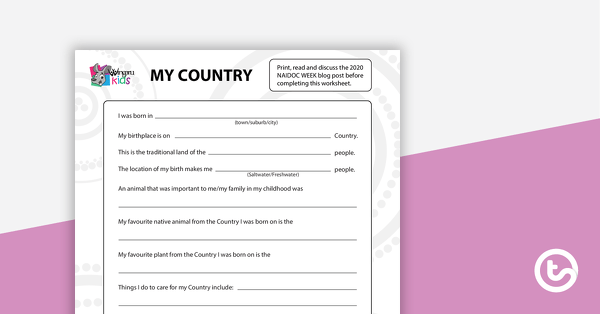
NAIDOC Week My Country Worksheet - Middle/Upper Primary
A NAIDOC Week "My Country" worksheet suitable for middle/upper primary school students.
- Plus Plan
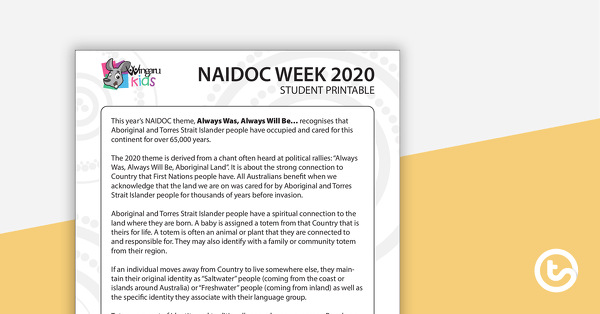
NAIDOC Week 2020 Student Printable
A printable student information sheet to provide context for NAIDOC Week 2020.
- Free Plan

Books for Sharing Indigenous Perspectives - Poster
A list of Indigenous storybooks for the classroom recommended by Aboriginal education organisation, Wingaru Education.
- Plus Plan
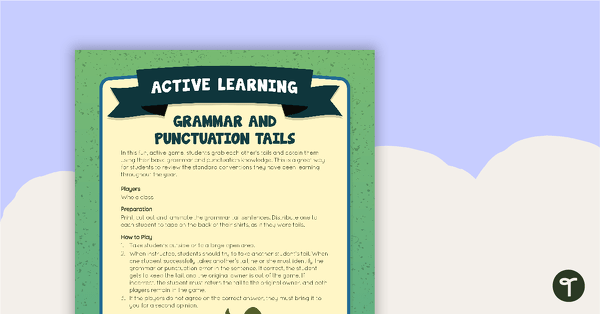
Grammar and Punctuation Tails - Active Learning
An active game that requires students to use their basic grammar and punctuation knowledge.
- Plus Plan
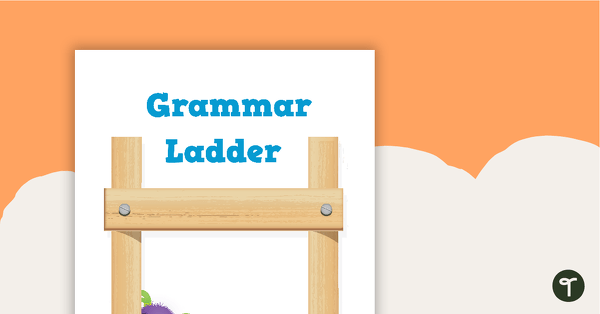
Grammar Tracking Chart – Monster Theme
A classroom display that allows students to see their progress towards using correct grammar and punctuation in their sentences.
- Plus Plan

Australia Day Cloze Worksheet
A cloze activity based on information about Australia Day.
- Plus Plan
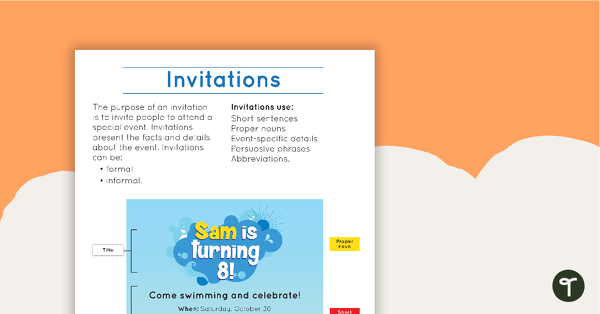
Invitation Text Type Poster With Annotations
A poster about invitations, including an annotated example.
- Plus Plan
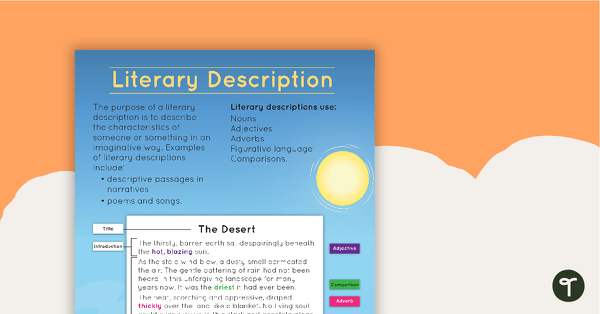
Literary Description Text Type Poster With Annotations
A poster about literary descriptions, including an annotated example.
- Plus Plan
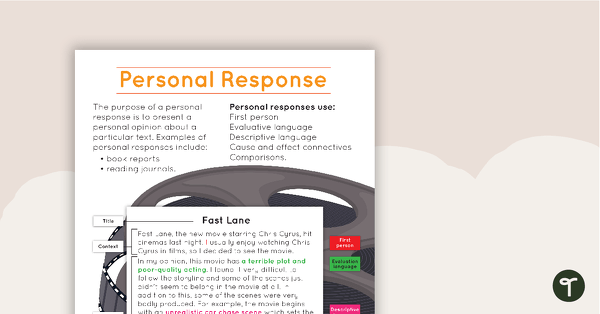
Personal Response Text Type Poster With Annotations
A poster about personal responses, including an annotated example.
- Plus Plan
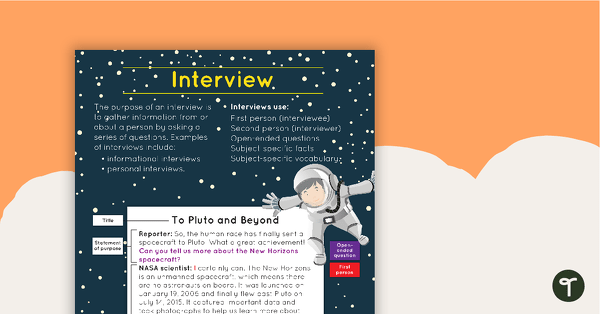
Interview Text Type Poster With Annotations
A poster about interviews, including an annotated example.
- Plus Plan

Punctuation Tracking Chart – Monster Theme
A classroom display that allows students to see their progress towards using correct grammar and punctuation in their sentences.
- Plus Plan
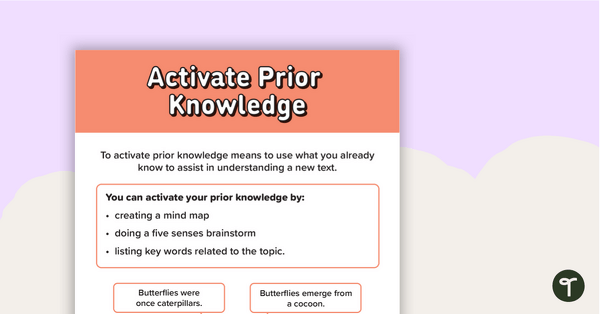
Activate Prior Knowledge Poster
A poster highlighting how to activate prior knowledge when reading a piece of text.
- Plus Plan
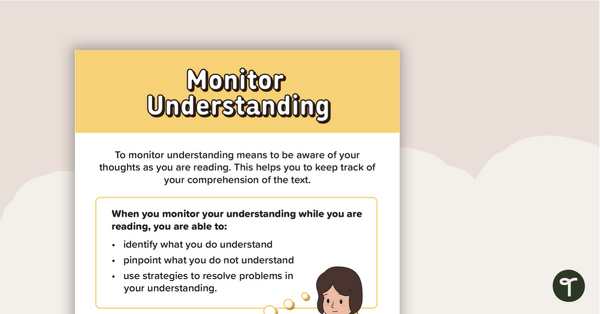
Monitor Understanding Poster
A poster highlighting how to monitor understanding when reading a piece of text.
- Plus Plan

Analogy- Literary Technique Poster
A poster with a description and examples of analogy, a literary technique.
- Plus Plan
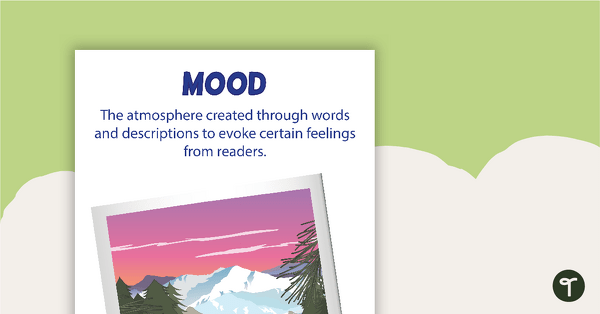
Mood - Literary Element Poster
A poster with a description and example of mood, a literary element.
- Plus Plan
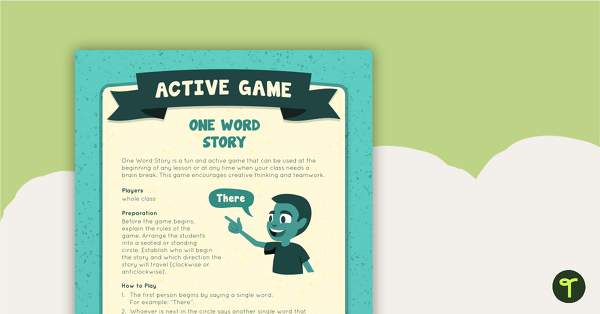
One Word Story Active Game
A whole class active game that encourages creative thinking and teamwork.